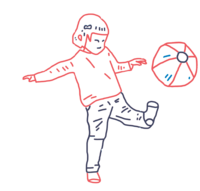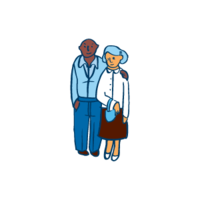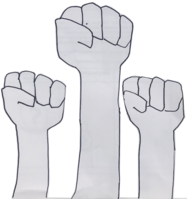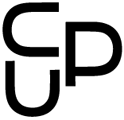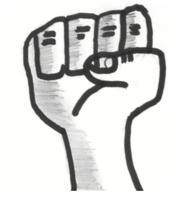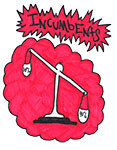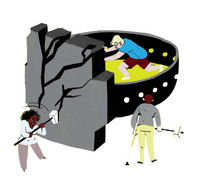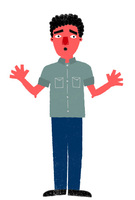Envisioning Development
‘Housing Update: Homelessness Record, Rent Regs Debate Intensifies’
City Limits
May, 3, 2019
The Department of Housing Preservation and Development has anew commissioner. Until last year, Louise Carroll had worked at HPD for 12 years, most recently overseeing the tax incentives program. The New York Post reports that NYCHA cut down more than 200 trees at the Baruch Houses on the Lower East Side. Residents were upset. According to NYCHA, deforestation is part of Hurricane Sandy recovery and repair efforts and the trees will be replaced. The Center for Urban Pedagogy along with several partners has launched a campaign educating tenants about how to report landlord harassment.
‘华埠监狱环境报告将公布(图)’
US China Press
March, 8, 2019
城市教育中心(Center for Urban Pedagogy)项目经理托瑞(Mark Torrey)介绍, ULURP是纽约市区划制度的运作核心, 任何与当前区划不一致的开发提议都必须申请进行ULURP。ULURP是一个标准化的流程,其目的是让影响城市土地使用的项目申请通过公众参与的审核。该过程主要包括申请、认证及各部门的审查。纽约宪章也规定了该流程中各部分的决策时间。ULURP主要的参与包括市规划局、市规划委员会、社区委员会、区长、区委员会、市议会及市长。
‘Fast facts about ULURP’
Brooklyn Daily Eagle
March, 8, 2019
Another thing that triggers the ULURP process is a proposal from the Department of City Planning or a different city agency to change the zoning in an entire neighborhood.Big drama can break out when neighborhood residents object to ULURP plans. There’s fiery testimony at public hearings. Community groups organize protests.The ULURP process takes several months — and often upward of a year for larger projects.We’ve synthesized our description of how it works with the help of materials from the DCP’s website and the “What is ULURP? Guidebook,” published by the Center for Urban Pedagogy.
‘The Center for Urban Pedagogy’
Franknews
May, 22, 2018
For most of our projects, community organizations apply to work with us, and they tell us what issues they’re having a hard time explaining to their constituents. What policy or planning process they’re having a hard time explaining, and why that’s creating injustice in their community
‘Zoning Game Lets Players Develop a 2,000-Square-Foot Lot’
Next City
April, 11, 2017
The tool comes from the Center for Urban Pedagogy (CUP) — the same nonprofit that urged designers working in cities to consider social impact and “not be a Dick.” CUP also broke down the “big picture” of NYC welfare, and created a game to help Harlem residents understand zoning and their rights.
‘A new tool teaches NYC developer lingo by making you an all-powerful urban planner’
Architect’s Newspaper
April, 4, 2017
Building on the What is Zoning? toolkit, CUP’s What is FAR? helps users get savvy with developer lingo—particularly the concept Floor Area Ratio (as readers may know, FAR determines the height and bulk of buildings). Language is power, and CUP, along with eight community partners, reasoned that it’s helpful for ordinary folks to speak the language of bureaucrats and capitalists when discussing changes in their neighborhoods.
‘How East Harlem Wrote Its Own Development Plan’
Next City
June, 20, 2016
“We have a conversation about that, about the bad, the fears, some people bring up the potential benefits. In that Lincoln Houses workshop, and this has not been uncommon, I remember residents saying no, that means the neighborhood is going to change,” recalls Haftel, a former curator for the Chicago Architecture Foundation. Haftel had been looking for a way to merge her love of art and design with her interest in urban justice and housing issues when she met CUP’s director, who was in Chicago for a meeting with community groups about adapting the group’s affordable housing workshop for use in their city.
‘Affordable Housing Appraised: A Review’
Urban Omnibus
December, 14, 2015
This wealth of diverse material, rounded out by interactive features like the Center for Urban Pedagogy’s digital “What is Affordable Housing” toolkit and the Citizens Housing and Planning Council’s “Inside the Rent” app, manage to convey not only why government is involved in affordable housing (because the private sector alone can’t, or won’t, provide it), but who that housing is for (a wide spectrum of individuals who otherwise wouldn’t have a place to live).
‘Where Will NYC’s 80,000 New Apartments Go?’
Epoch Times
September, 13, 2014
As a starting point, many Council members, including Reynoso, Levin, and Carlos Menchaca, are using kits that explain zoning and affordable housing created by the Center for Urban Pedagogy (CUP).
‘What Is Zoning?’
Urban Omnibus
February, 19, 2014
We think a lot about how to create a visual environment that’s non-threatening, especially when you are dealing with an issue that’s stressful, complicated, and may affect whether or not you can afford to stay in your home. We want things to feel familiar and accessible and to avoid people feeling that they might not understand the concept.
‘TDR, IBZ, WTF?! The Center for Urban Pedagogy Spells Out Zoning Basics for the Uninitiated’
Untapped Cities
January, 8, 2014
CUP is dedicated to increasing the public’s understanding of urban policymakers’ jargon and labyrinthine public engagement procedures. They created the “What is Zoning?” toolkit and guidebook to help educators, neighborhood groups and community boards to shed light on the New York City zoning process for their constituents.
‘CUP Tools Up’
Architect’s Newspaper
March, 2, 2010
“CUP helps us deconstruct our environment in order to advocate for social justice”
